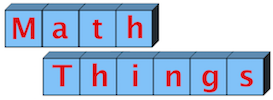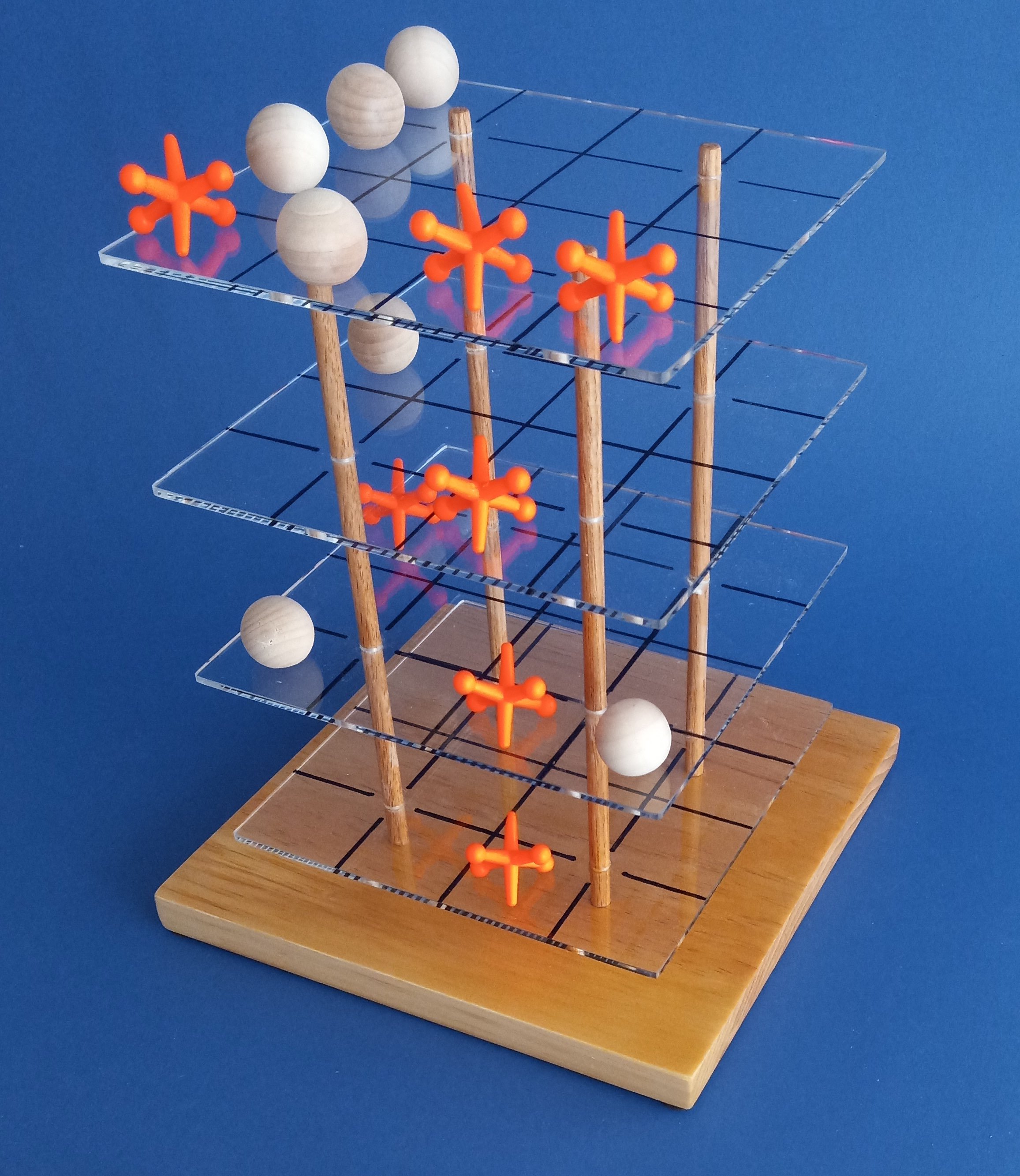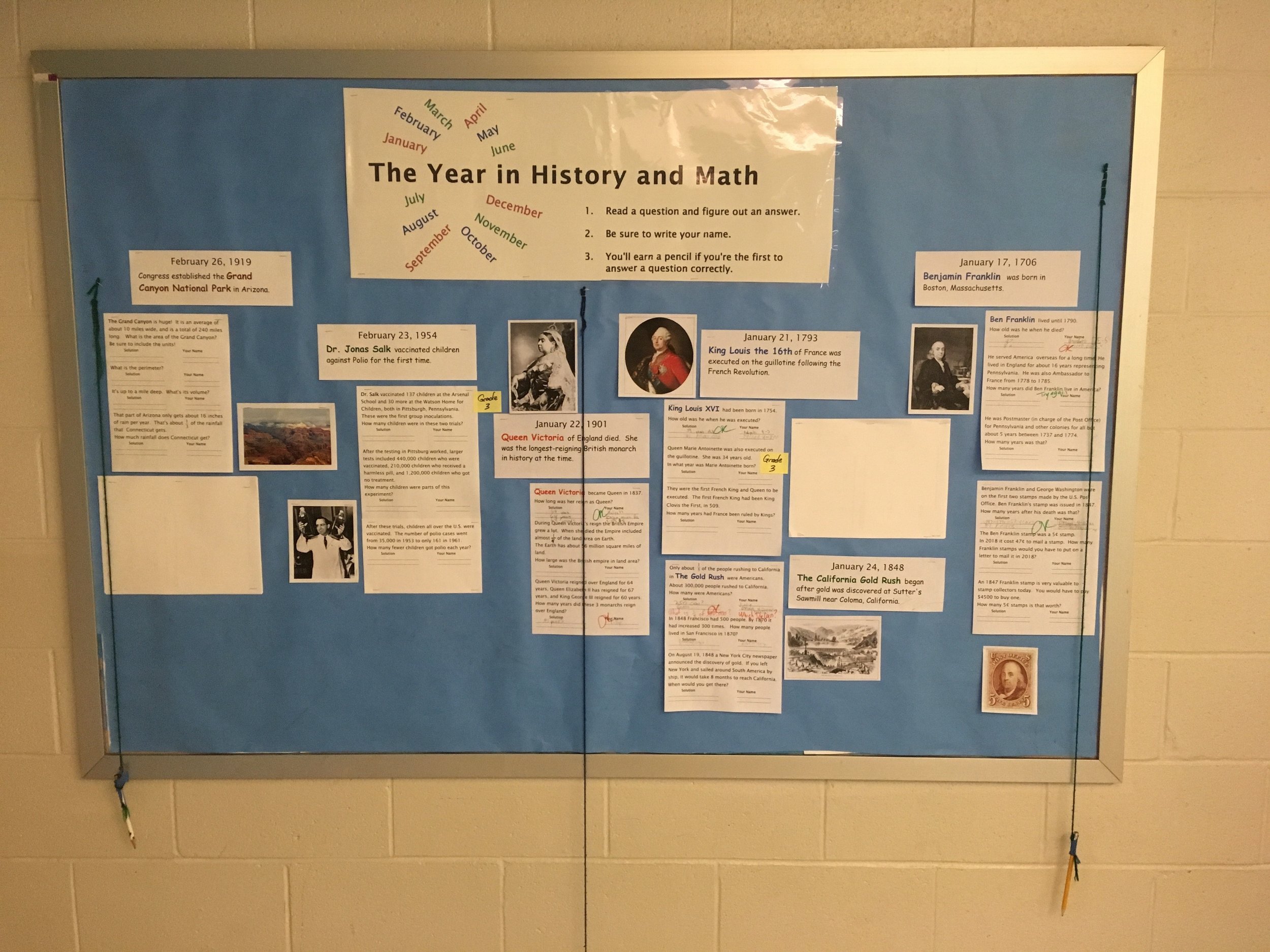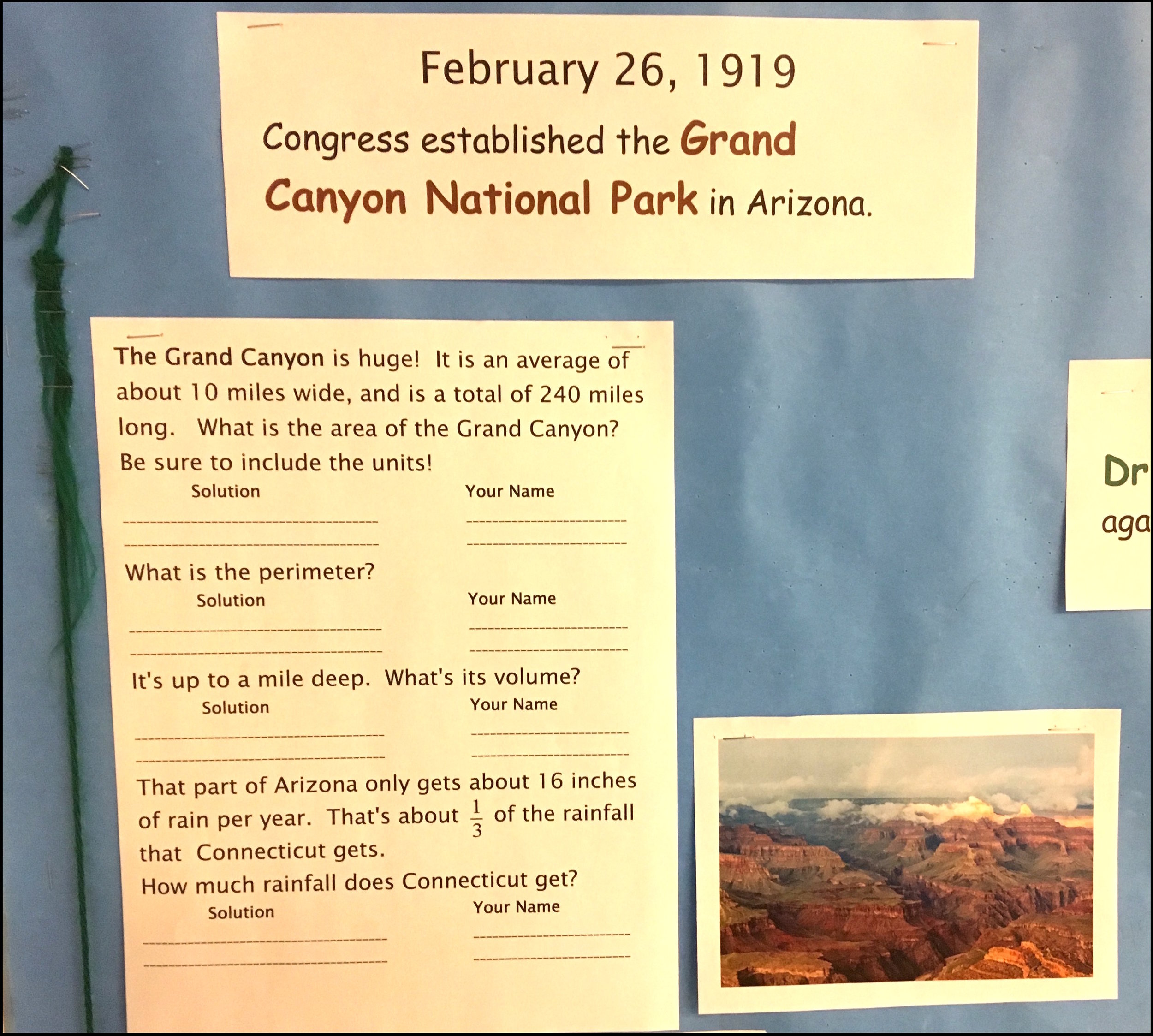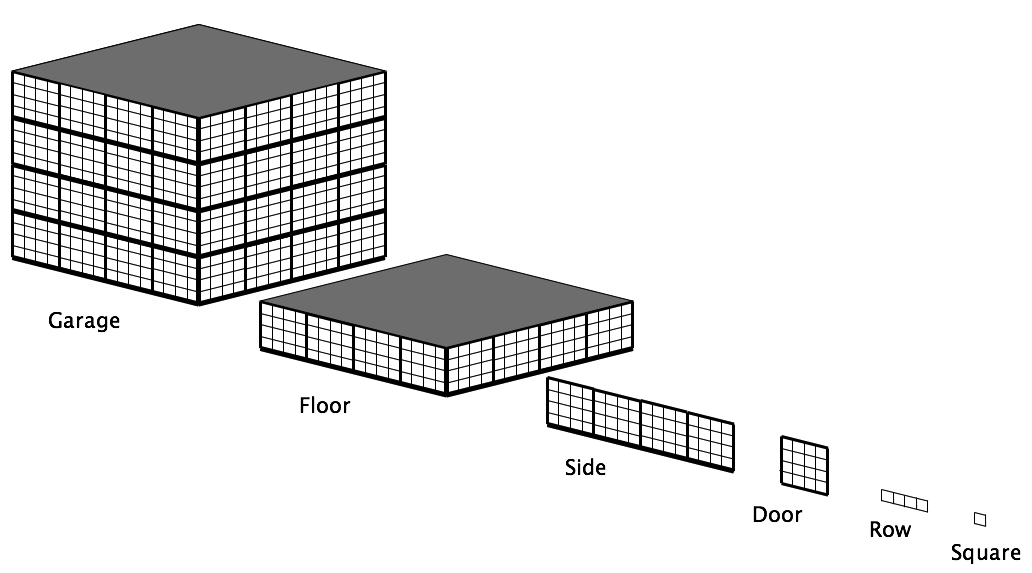“Can we do an outdoor project?” a student asked one beautiful September afternoon. Here is the result.
The school has an asphalt basketball court that isn’t used very much. The following week, we went outside and measured out a one-foot grid on the court. The court is a little over 30 feet wide (the vertical dimension in this picture) and almost 40 feet in length.
The following day I went out with a chalk line and snapped lines. They are difficult to see in this picture –- I wish I had used bright yellow chalk instead of orange. The next morning the students numbered the grid. Notice there are numbers at both edges and along both axes. Then we collected as much sidewalk chalk as we could find and students created drawings. If you look closely at the individual drawings you can see a dot on each one. The dots are all on intersections. I assigned specific students to a Quadrant to keep the drawings evenly distributed.
The purpose of all this was to give us a vehicle for using the distance formula to calculate the distances between drawings. The location of each drawing is determined by the coordinates of its dot.
The students then did assignments to find distances. After they did the calculations, each pair of students used a long tape measure to confirm that the calculations were accurate. They had a good time, and the good weather lasted just long enough for us to finish. Of course, this could be done in a gym or lunchroom… anyplace with a large, open floor. The students could do the drawings on drawing paper and the grid laid out using narrow painter’s tape if the floor cannot be marked up.
